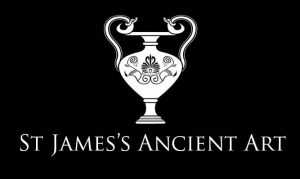Glassware in antiquity was considered an art form, with the best pieces sometimes even valued higher than wares made from precious metals. Glass was often the preferred material for storing expensive oils, perfumes, and medicines in antiquity due to its non-porous and non-absorbent nature. Glass vessels are found frequently at Hellenistic and Roman sites, especially in cemeteries, and the liquids that filled them would have been gathered from all corners of the expansive Roman Empire.
Theatre was immensely popular in ancient Greece and Rome. The Roman theatrical tradition was developed from ancient Greek tragedies and comedies, from which they took direct inspiration, starting to stage plays in 240 BC. Theatre was usually performed during public festivals, sponsored by the Roman elite in order to gain political popularity, with Pompey the Great commissioning the building of a stone theatre in 55BC, the first permanent theatre built in Rome. Theatrical motifs were often used for decorative purposes in Roman art, featuring on lamps, wall paintings, appliqués, and so on. Masks were prevalent in the theatres of Ancient Greece and Rome, appearing in a variety of colours and designs. Stylistically, they featured over-exaggerated facial features and expressions, both artistically to reflect the drama of the Greco-Roman theatre and practically to highlight different characters and aid in projection of the voice. This particular depiction, with its large smile, was likely a representation of a comedic mask, which often used exaggerated and caricatured expressions.
To learn more about Roman glass, visit our relevant post: How It Was Made: Roman Glass.












